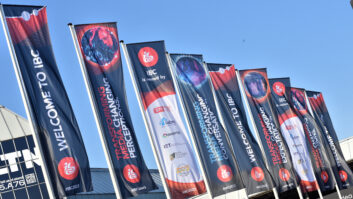
Manufacturers and integrators involved in the digital/DooH market sector will have been heartened by a recent report from Kinetic Worldwide, which shows substantial growth in the UK’s digital signage market.
The Kinetic Worldwide report – “On the Threshold of Change” – studies the future of poster advertising in the UK. It reveals that Out of Home media will not only increase its market share as a result of digital technology over the next ten years, but its structure will change significantly too. The transformation of Out of Home as an advertising medium will be matched by the changes digital posters bring to urban environments and interactive communications with consumers out of the home.
“Rather than being a disruptive force, digital technology will create enormous opportunities for Out of Home media,” said James Copley, COO UK at Kinetic Worldwide (pictured). “Our analysis, consultations and research suggest the poster industry is entering a transformative period; one in which it will gain market share by integrating technology and delivering a wider range of effective and engaging propositions.”
“What is clear is that rather than just replacing static sites, digital posters will enable Out of Home media to offer advertisers both reach and more direct engagement,” he continued. “The potential to fuse digital posters with mobile interaction also has great potential. It’s up to our industry to grasp these challenges and opportunities.”
According to Kinetic, total OOH media spend to see continued growth from £880m (2010) to £1.15bn by 2020. Digital revenues will reach almost £260m, accounting for approximately 23% of total OOH spend.
Kinetic’s analysis reveals that digital sites will not simply replace static posters, but will create additional levels of consumer reach. Digital poster networks will be visible across 30 cities nationally with almost 110,000 screens in use. Aggressive digital expansion is expected for six sheets and bus shelters after 2015. Only a limited rationalisation of static posters is expected.
The report also concludes that two broad OOH sectors will emerge: broadcast and targeted. Broadcast will include large numbers of well-positioned static sites and premium digital sites. Targeted will include national networks of digital sites capable of time-flexible distribution and real-time reactive campaigns.
Some urban areas, says Kinetic, will deliver a multi-media experience. Instantaneous download capability within a growing number of smartphones, matched by NFC or RFID interactive technology in posters, could transform promotional marketing and the distribution of social media and entertainment content even in low-dwell time urban environments. In addition a significant number of sites are expected to be capable of recognising consumer types and moods.
New research by Kinetic reveals that half of consumers already see the value of interacting with posters and 20% even expect to be recognised by posters in the future; 75% expect to carry a smartphone or tablet computer; 66% expect to see digital screens in most city centres; 70% think digital posters beneficial in high-dwell time locations.
Kinetic’s analysis suggests OOH will develop a symbiotic relationship with mobile marketing and internet-based campaigns, opening up new revenue streams. Content will play an increasing role in OOH media and billboards are likely to become a distribution point for digitised news and entertainment content.







